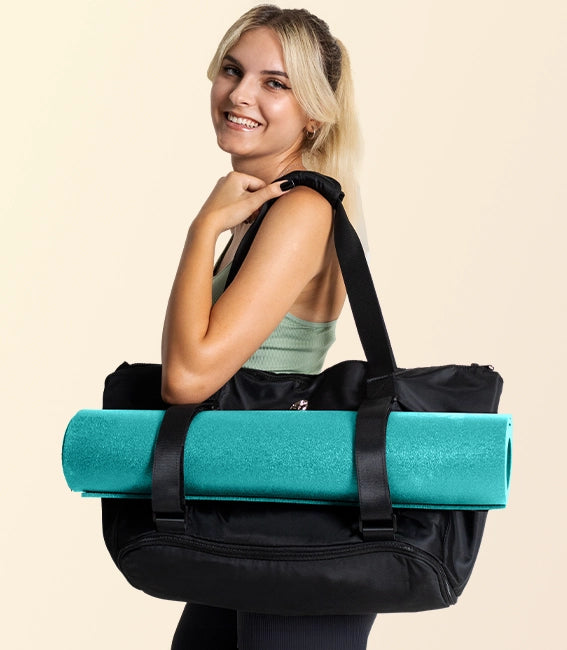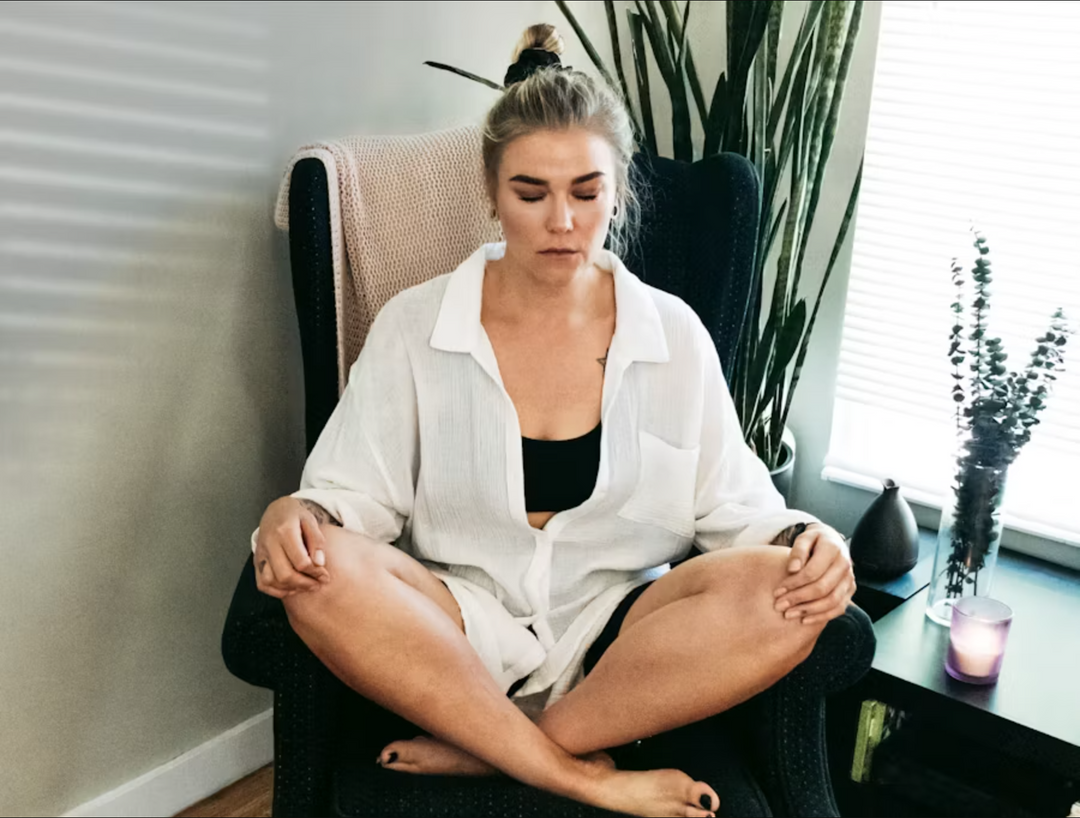
Understanding Yoga and Flexibility with Marisela
Welcome back to our series, where today, Marisela, a seasoned yoga and Pilates instructor, rejoins us to demystify one of yoga’s most common queries—flexibility. We explore whether flexibility is a prerequisite for yoga and how yoga aids in gaining flexibility, regardless of age.
Listen to the podcast on Spotify:
7 Most Popular Questions About Yoga and Body Flexibility
In this article, we’ll delve in the following burning questions about yoga and flexibility:
- Can I do yoga if I’m not flexible?
- How long does it take to get flexible with yoga?
- What type of yoga is best for flexibility?
- Can you regain flexibility after 40?
- How many times a week should I do yoga for flexibility?
- Why am I not getting more flexible with yoga?
- What to do if you can’t do a yoga pose?
Now, let’s get into one by one.
1. Can I Do Yoga If I'm Not Flexible?
One of the most prevalent misconceptions about yoga is that one needs to be flexible to start practicing. Marisela addresses this by clarifying that yoga is actually a path to gaining flexibility, not a barrier to entry. “You do yoga to become flexible, not because you already are,” she explains, encouraging everyone to embrace yoga to discover their body’s potential.
2. How Long Does It Take to Get Flexible with Yoga?
Flexibility varies by individual, influenced by factors like age, genetics, and consistent practice. Marisela suggests that noticeable improvements in flexibility can generally be seen after about three months of regular yoga practice.
For beginners, especially those over 40 or those who haven’t been physically active, initial sessions may feel challenging, but perseverance is key.
3. What Type of Yoga Is Best for Flexibility?
All yoga types contribute to improving flexibility, but Marisela recommends starting with forms that align with one’s current fitness level to prevent injuries.
Styles like Yin Yoga, Hatha, Ashtanga, and Vinyasa are excellent for beginners. She stresses the importance of exploring various styles and instructors to find what truly resonates with you.
4. Can You Regain Flexibility After Age 40?
Absolutely, says Marisela, sharing stories of individuals, including her students, who began yoga later in life and achieved remarkable flexibility.
She emphasizes that it’s never too late to start, and the journey of yoga is more about consistent practice and less about age.
5. How Often Should You Do Yoga to Gain Flexibility?
For optimal results, Marisela recommends practicing yoga at least three times a week. However, any yoga is better than none. Even short, consistent sessions can lead to improvements over time, making flexibility goals more attainable.
6. Why am I not getting more flexible with yoga?
A common concern among yoga practitioners is the lack of noticeable progress in flexibility. Marisela addresses this issue by exploring several factors that could impede flexibility gains, as follows.
1. Frequency and Consistency of Practice:
Marisela emphasizes the importance of regular practice. She suggests that inconsistency—practicing sporadically or infrequently—can significantly slow down progress. Establishing a routine that includes yoga sessions multiple times a week can lead to better results.
2. Physical and Lifestyle Factors:
Diet, sleep quality, stress levels, and overall health significantly affect flexibility. Marisela notes that high levels of stress and poor diet can lead to tight muscles, making it harder to achieve flexibility.
She encourages a holistic approach to health, ensuring that these factors are managed alongside yoga practice.
3. Mental and Emotional State:
Being mentally or emotionally rigid can reflect in one’s physical state. Marisela advises maintaining an open and positive mindset, as a flexible mind often leads to a flexible body.
She suggests that self-imposed limitations and doubts can be barriers that practitioners need to overcome.
4. Biological Factors:
Age, genetics, and the body’s natural collagen levels can also play a role. While these are less controllable, understanding one’s body and its capabilities can help set realistic expectations and goals.
5. Patience and Perseverance:
Finally, Marisela stresses the need for patience. Flexibility improvements can be slow, and it’s crucial for practitioners to remain patient and persistent.
Recognizing small advancements and maintaining a positive outlook are key components of a successful yoga journey.
7. What to do if you can't do a yoga pose?
For those struggling with certain yoga poses, Marisela advises patience and practice. Not everyone will master every pose, and that’s perfectly fine.
Yoga is a personal journey where each individual progresses at their own pace. If a pose feels unachievable, there are always alternatives that can offer similar benefits without discomfort.
Wrap up
Flexibility in yoga is a journey of exploration and patience. Marisela’s insights remind us that yoga is about personal growth and body awareness, not competition or comparison. Whether you’re a beginner or returning to yoga, the key is to stay consistent, keep an open mind, and enjoy the process of becoming more in tune with your body.
Key Questions Explored:
-
Can I Do Yoga If I’m Not Flexible? – Marisela dispels the common myth that one needs to be inherently flexible to start yoga. She emphasizes that yoga is for everyone and is a journey toward gaining flexibility, not a requirement to begin.
-
How Long Does It Take to Get Flexible with Yoga? – Flexibility is a personalized journey that depends on individual factors such as age, genetics, and regular practice. Marisela notes that while results vary, consistent practice typically leads to noticeable improvements.
-
What Type of Yoga Is Best for Flexibility? – All yoga styles contribute to increased flexibility. Marisela encourages trying different styles and finding the one that resonates with your needs and current fitness level.
-
Can You Regain Flexibility After Age 40? – Age is not a barrier to improving flexibility with yoga. Marisela shares inspiring examples of individuals who started yoga later in life and achieved significant flexibility gains.
-
How Often Should You Do Yoga to Gain Flexibility? – Practicing yoga at least three times a week is ideal, but any consistent practice is beneficial. Flexibility goals are more achievable with regular, dedicated sessions.
-
Why Am I Not Getting More Flexible with Yoga? – Several factors can affect flexibility progress, including practice frequency, physical health, diet, stress levels, and emotional state. Marisela suggests a holistic approach to overcoming these challenges.
- What to Do If You Can’t Do a Yoga Pose? – Marisela advises that if a pose isn’t accessible, it’s important to either modify it or choose an alternative pose that doesn’t cause discomfort, highlighting the importance of listening to one’s body and respecting its limits.
The article underscores that yoga is not just about achieving physical poses but is a holistic practice that involves body, mind, and emotional well-being. Each question is addressed with practical advice and motivational insights, reinforcing the idea that yoga is a transformative journey unique to each individual.
Check out other yoga Q&A topics:





